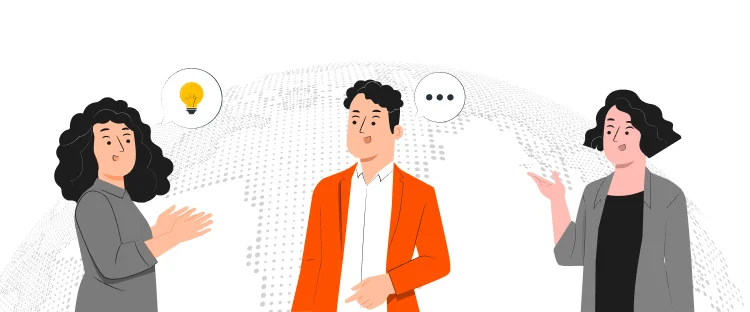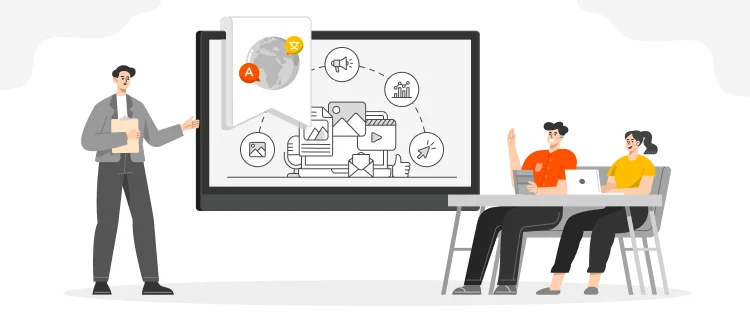The translation industry is one of the grooming industries of the century. Each step takes you to the next level of clarity and accuracy. It's a worldwide business phenomenon required by all enterprises for various reasons.
Translation services are always focused on providing their clients with a quality translation as the final product. But how does it all work? Before doing anything else, you need to have a clear understanding of the TEP.
The translation is not a single-step process. There are multiple steps in the translation process which are an integral part of document conversion from one language to another. TEP stands for Translation-Editing-Proofreading. These three steps are the most vital parts of the entire process.
To achieve the highest level of translation accuracy without any flaws and error, to retain quality is of the foremost priority. Each stage consists of a team of linguistic workers at the backend; a translator, proofreader, editor, and so on.
During translation little or no communication is required, which makes this process focused and goal-oriented. Teams may be countries apart but can work collaboratively via the internet.
The majority of role play depends on the translation. Translators working on the project must be native experts with professional experience under their belt. But it's not only the translator who translates the content; they need the assistance of various translation tools as well.
Glossaries and translation memories are just two of the core tools, extremely helpful during the translation process. It is time-efficient and less costly too for the service providers. Translators do not have to go through a word by word translation; it's just like using a dictionary.
If you think translation is difficult then editing is a level ahead in terms of being crucial. Even after a document is translated, it is not a final draft; it will undergo stages of editing and proofreading to minimize the errors.
Besides removing errors, editing affects the structure and format of the document as well. The goal for editing will vary from project to project (according to the requirement) such as;
Similar to the translation step, the editor is also a linguist with experience in the field. They ensure that the content transitions smoothly from the source language to the target language. Necessary changes are made according to the readers’ requirements.
This stage is all about reviewing the translated document. The main aim is to take a detailed look over the original documents versus the translated (and edited)version. The terminologies used, edits, the structure of the document, etc., each and everything is paid close attention.
Usually, the proofreaders are the senior translators and have a lot of experience gained from years of working on various projects. These are also the subject matter experts with in-depth knowledge about the industries.
In short, the aim is to ensure no errors are found after a delivery is made to the client.
LQA known as the Language Quality Assurance Stage is led by the quality assurance team members. They are responsible to ensure a strong correspondence in the technical format and the layout of the project. It can be a website, mobile app, or even a document, every project has different sets of specifications.
To meet the high expectations of the clients, the TEP process prioritizes the layout of the project that includes formats, numerical accuracy, etc. It is done with the help of translation software tools. Just in case even if proofreading is not that "provable” then this step is drawn to assure the final product is up to the mark.
Technical comparisons of translated content are made with the source content. This allows an in-depth identification of grammatical errors as well. You can recover the document, edit it rather easily.
However, the main purpose is that it ensures the consistency of the project.
Sometimes, clients have a set of requirements, according to which translation needs to be done. To ensure you follow the prescribed guidelines given by your client, you need to check that the terms used are consistent and about the context.
The grammar, punctuation, parts of speech, every single aspect affects the quality of the target language. Now, the target language may differ a lot from the source language, which is why language quality check is important.
Country standards for certain terminologies vary, so you need to keep up with the target language.
The TEP process works best in favor of businesses. The translation service providers ensure to provide quality translation to their clients, based on this process and other standard measures they use to minimize the errors. The translation is not an easy game to play, but once you become familiar with the rules and gain experience, you learn which projects to choose and so on. TEP processes also enhance the clients’ experience.
Here at Mars Translation, we provide reliable and fast translation services for all business industries in more than 230 languages. Get in touch for details!

Colorado is said to be one of the best places to do business because the business environment is very friendly
Read More
The global marketplace has become an attractive place for brands and businesses, where they strive to create a presence of
Read More
CAD, or computer-aided design and drafting (CADD), is the use of computer technology for design and design documentation. CAD software
Read More
Many global companies, foreign governments and Iranian are hoping to see an increase in investment in Iran after declaring the
Read More
Artificial intelligence has taken a big space in almost every industry. There is also a widespread acceptance that AI is
Read More
Persuasion is all about manipulating other people behavior. At first it might sound immoral but it doesn’t have to be.
Read More
Now days everyone is searching for good ideas for their company they wanted to be more creative, they wanted to
Read More
Technology has now much diverse roots in this age of development. Now it is not wrong to say, that you
Read More
Localization is the practice of altering the functional properties of a product and also its characteristics. This is easily done
Read More


Document Translation
Professional document translation by native expertsApp Localization
Get more downloads by adapting your app for different target marketsVideo Translation
Multilingual translation and subtitling servicesWebsite Localization
Adapt your website into multiple contexts for global reachSoftware Localization
Adapt your software for global usersGame Localization
Reach new players with localized gameplayMTPE
Refine AI translations for natural fluencyBusiness Translation
Professional translation for business documents and websitesDTP & File Conversion
Professional DTP and File conversion, supporting multiple file formatsProofreading
Perfect your content with expert review© Copyright 2025 MarsTranslation